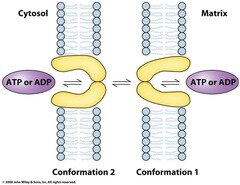
This branding can never be removed, although in some states a vehicle that is sufficiently rebuilt can receive an additional rebuilt branding. Before thinking about where to find a junk yard near me, you can see this list of areas where we serve to buy your junk car. We provide instant cash offers and free pick up your damaged vehicle in as little as hours. You want your accounting records to reflect the true status of your business’s finances, so don’t wait until tax season to start thinking about depreciation.
At DamagedCars.com, we specialize in buying damaged cars and cars in less-than-perfect condition. You know you’ve correctly calculated annual straight-line depreciation when the asset’s ending value is the salvage value. In the depreciation schedule above, the refrigerator’s ending book value in year seven is $1,000, the same as the salvage value. Say you own a chocolate business that bought an industrial refrigerator to store all of your sweet treats. You paid $10,000 for the fridge, $1,000 in sales tax, and $500 for installation.
- Mainly used to calculate yearly depreciation charge on tangible which in turn affects net profits, taxable profits, etc.
- In other contexts, residual value is the value of the asset at the end of its life less costs to dispose of the asset.
- The fixed assets are expected to be useful for five years and then be sold for $200k.
Also, a straight line basis assumes that an asset’s value declines at a steady and unchanging rate. This may not be true for all assets, in which case a different method should be used. When calculating depreciation in your balance sheet, an asset’s salvage value is subtracted from its initial cost to determine total depreciation over the asset’s useful life. In addition to straight line depreciation, there are also other methods of calculating depreciation of an asset. Different methods of asset depreciation are used to more accurately reflect the depreciation and current value of an asset.
Introduction to Salvage Value Calculator
Map out the asset’s monthly or annual depreciation by creating a depreciation schedule. You must remain consistent with like assets; if you have two fridges, they can’t be on different depreciation methods. For our example scenario, we’ll assume a company spent $1 million purchasing machinery and tools. The fixed assets are expected to be useful for five years and then be sold for $200k. Discover how to identify your depreciable assets, calculate their salvage value, choose the most appropriate salvage value accounting method, and handle salvage value changes.

The salvage value formula calculator is an online free tool that helps find the resale value for any asset. It uses the salvage value formula to find resell value and gives step-by-step solutions by explaining every term. Deskera Books is an online accounting software that your business can use to automate the process of journal entry creation and save time. The double-entry record will be auto-populated for each sale and purchase business transaction in debit and credit terms.
Their values will automatically flow to respective financial reports.You can have access to Deskera’s ready-made Profit and Loss Statement, Balance Sheet, and other financial reports in an instant. The units of production method is based on an asset’s usage, activity, or units of goods produced. Therefore, depreciation would be higher in periods of high usage and lower in periods of low usage. This method can be used to depreciate assets where variation in usage is an important factor, such as cars based on miles driven or photocopiers on copies made.
DamagedCars is the premiere marketplace
An example of this is the difference between the initial purchase price of a brand new business vehicle versus the amount it sells for scrap metal after being totaled or driven 100,000 miles. This difference in value at the beginning versus the end of an asset’s life is called “salvage value.” To calculate depreciation using a straight line basis, simply divide net price (purchase price less the salvage price) by the number of useful years of life the asset has. Salvage value is important in accounting as it displays the value of the asset on the organization’s books once it completely expenses the depreciation. It exhibits the value the company expects from selling the asset at the end of its useful life.
By the end of the PP&E’s useful life, the ending balance should be equal to our $200k assumption – which our PP&E schedule below confirms. Hence, a car with even a couple of miles driven on it tends to lose a significant percentage of its initial value the moment it becomes a “used” car. As a quick example, let’s say you’re currently attempting to determine the salvage value of your car, which you purchased four years ago for $100,000.
How do you calculate an asset’s salvage value?
If the assets have a useful life of seven years, the company would depreciate the assets by $30,000 each year. It just needs to prospectively change the estimated amount to book to depreciate each month. The majority of companies assume the residual international admissions requirements for adp students value of an asset at the end of its useful life is zero, which maximizes the depreciation expense (and tax benefits). The useful life assumption estimates the number of years an asset is expected to remain productive and generate revenue.
- Unlike the other methods, the double-declining balance method doesn’t use salvage value in its calculation.
- Under most methods, you need to know an asset’s salvage value to calculate depreciation.
- To appropriately depreciate these assets, the company would depreciate the net of the cost and salvage value over the useful life of the assets.
- Straight line is the most straightforward and easiest method for calculating depreciation.
- On the other hand, book value is the value of an asset as it appears on a company’s balance sheet.
Each year, the depreciation expense is $10,000 and four years have passed, so the accumulated depreciation to date is $40,000. The impact of the salvage (residual) value assumption on the annual depreciation of the asset is as follows. If the residual value assumption is set as zero, then the depreciation expense each year will be higher, and the tax benefits from depreciation will be fully maximized. Sometimes, an asset will have no salvage value at the end of its life, but the good news is that it can be depreciated without one.
Here’s how you can determine the ACV and salvage value:
You can still calculate depreciation without a salvage value; just put a $0 in any place where you need to enter a salvage value. The beginning balance of the PP&E is $1 million in Year 1, which is subsequently reduced by $160k each period until the end of Year 5.
Southwest Airlines Newsroom – Southwest Airlines Newsroom
Southwest Airlines Newsroom.
Posted: Thu, 27 Jul 2023 10:55:00 GMT [source]
Say that a refrigerator’s useful life is seven years, and seven-year-old industrial refrigerators go for $1,000 on average. The fridge’s depreciable value is $10,500 ($11,500 purchase price minus the $1,000 salvage value). If you’re unsure of your asset’s useful life for book purposes, you can’t go wrong following the useful lives laid out in the IRS Publication 946 Chapter Four.
Formula:
Through that process, you’re forced to determine the asset’s useful life, salvage value, and depreciation method. Salvage value is an asset’s estimated worth when it’s no longer of use to your business. Say your carnival business owns an industrial cotton candy machine that costs you $1,000 new.
Salvage Value Meaning and Example – Investopedia
Salvage Value Meaning and Example.
Posted: Sat, 25 Mar 2017 21:36:56 GMT [source]
In other words, companies can stretch the cost of assets over many different time frames, which lets them benefit from the asset without deducting the full cost from net income (NI). In addition, you should understand how insurance companies decide how to pay your damaged vehicle claim, so you are certain you receive what you are owed. If your vehicle is totaled, you have the option accepting less money from the insurance company and keeping your car. In order to know if you are getting a fair offer, you need to understand how the salvage value of your vehicle is calculated. In accounting, an asset’s salvage value is the estimated amount that a company will receive at the end of a plant asset’s useful life.
What Are Realistic Assumptions in the Straight-Line Method of Depreciation?
This calculator calculates the salvage value using original price, depreciation rate, number of years values. If you’re using the wrong credit or debit card, it could be costing you serious money. Our experts love this top pick, which features a 0% intro APR for 15 months, an insane cash back rate of up to 5%, and all somehow for no annual fee.

However, MACRS does not apply to intangible assets, or things of value that you can’t see or touch. Intangible assets are amortized using the straight-line method and usually have no salvage value, meaning they’re worthless at the end of their useful lives. At this point, the company has all the information it needs to calculate each year’s depreciation. It equals total depreciation ($45,000) divided by useful life (15 years), or $3,000 per year. This is the most the company can claim as depreciation for tax and sale purposes.



